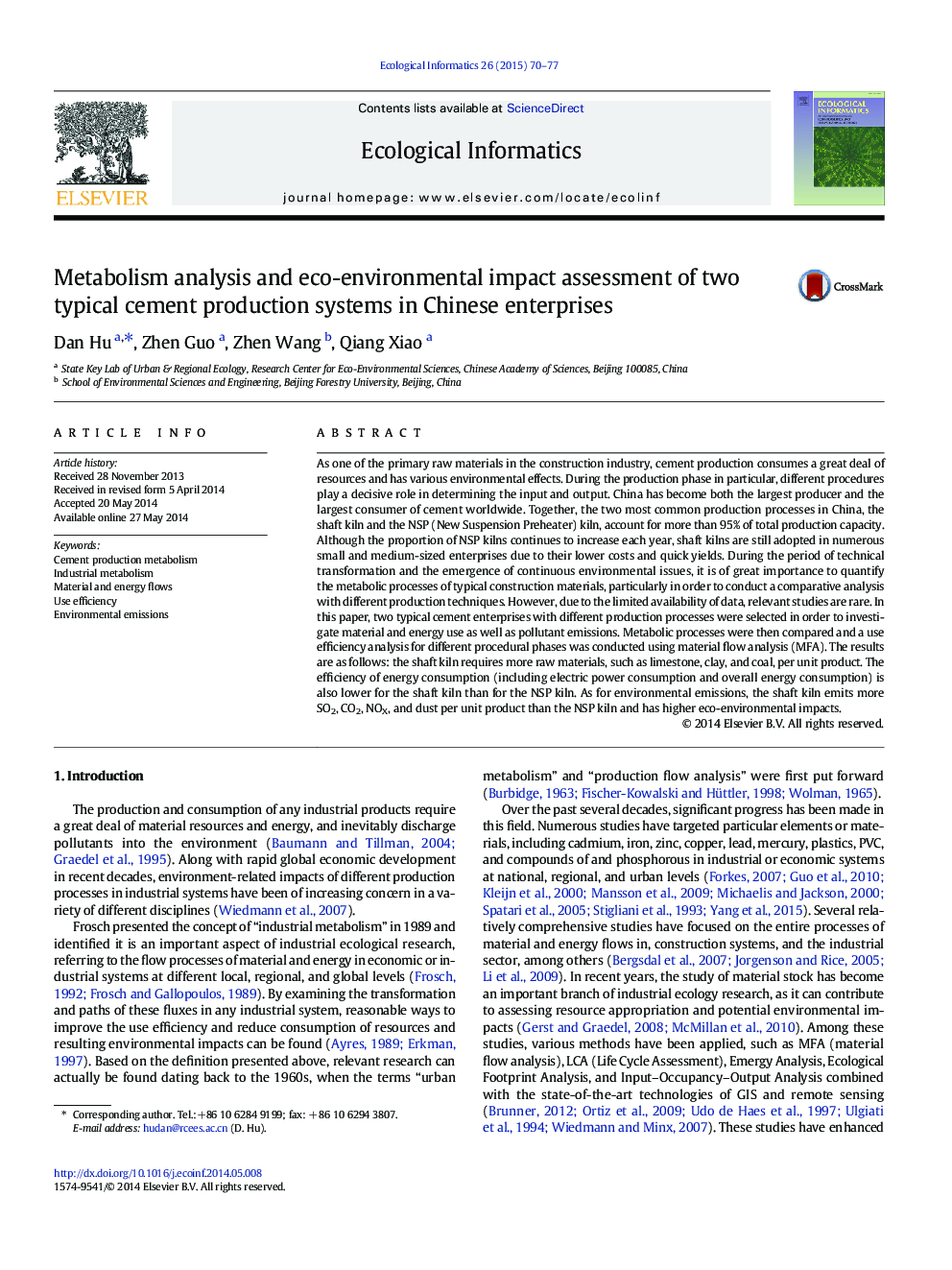| کد مقاله | کد نشریه | سال انتشار | مقاله انگلیسی | نسخه تمام متن |
|---|---|---|---|---|
| 4374857 | 1303223 | 2015 | 8 صفحه PDF | دانلود رایگان |
عنوان انگلیسی مقاله ISI
Metabolism analysis and eco-environmental impact assessment of two typical cement production systems in Chinese enterprises
ترجمه فارسی عنوان
تجزیه و تحلیل متابولیسم و ارزیابی اثرات زیست محیطی دو سیستم تولید سیمان معمولی در شرکت های چینی
دانلود مقاله + سفارش ترجمه
دانلود مقاله ISI انگلیسی
رایگان برای ایرانیان
کلمات کلیدی
متابولیسم تولید سیمان، متابولیسم صنعتی، جریان مواد و انرژی، استفاده از بهره وری، انتشارات محیط زیست،
موضوعات مرتبط
علوم زیستی و بیوفناوری
علوم کشاورزی و بیولوژیک
بوم شناسی، تکامل، رفتار و سامانه شناسی
چکیده انگلیسی
As one of the primary raw materials in the construction industry, cement production consumes a great deal of resources and has various environmental effects. During the production phase in particular, different procedures play a decisive role in determining the input and output. China has become both the largest producer and the largest consumer of cement worldwide. Together, the two most common production processes in China, the shaft kiln and the NSP (New Suspension Preheater) kiln, account for more than 95% of total production capacity. Although the proportion of NSP kilns continues to increase each year, shaft kilns are still adopted in numerous small and medium-sized enterprises due to their lower costs and quick yields. During the period of technical transformation and the emergence of continuous environmental issues, it is of great importance to quantify the metabolic processes of typical construction materials, particularly in order to conduct a comparative analysis with different production techniques. However, due to the limited availability of data, relevant studies are rare. In this paper, two typical cement enterprises with different production processes were selected in order to investigate material and energy use as well as pollutant emissions. Metabolic processes were then compared and a use efficiency analysis for different procedural phases was conducted using material flow analysis (MFA). The results are as follows: the shaft kiln requires more raw materials, such as limestone, clay, and coal, per unit product. The efficiency of energy consumption (including electric power consumption and overall energy consumption) is also lower for the shaft kiln than for the NSP kiln. As for environmental emissions, the shaft kiln emits more SO2, CO2, NOX, and dust per unit product than the NSP kiln and has higher eco-environmental impacts.
ناشر
Database: Elsevier - ScienceDirect (ساینس دایرکت)
Journal: Ecological Informatics - Volume 26, Part 1, March 2015, Pages 70-77
Journal: Ecological Informatics - Volume 26, Part 1, March 2015, Pages 70-77
نویسندگان
Dan Hu, Zhen Guo, Zhen Wang, Qiang Xiao,
